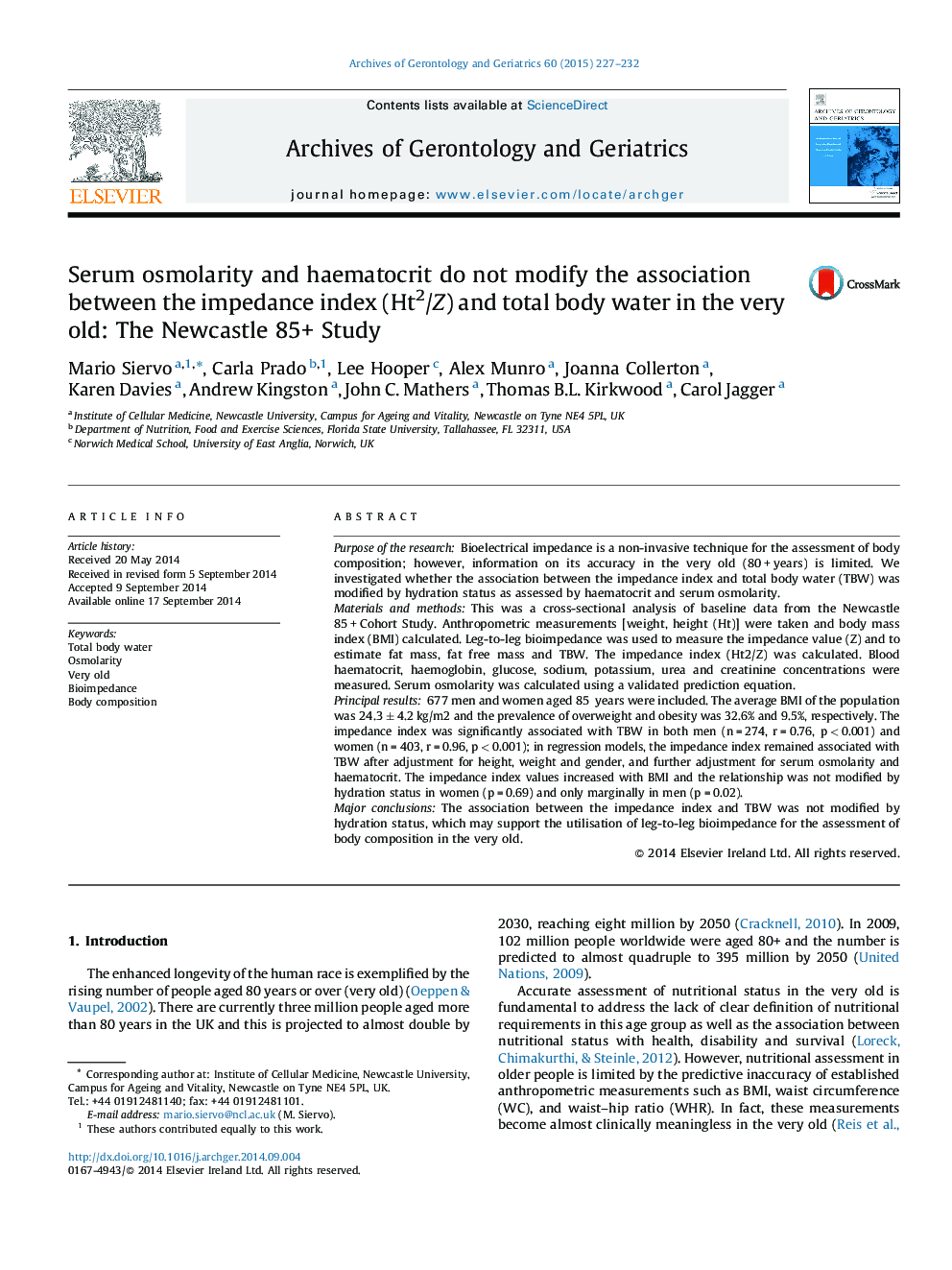| کد مقاله | کد نشریه | سال انتشار | مقاله انگلیسی | نسخه تمام متن |
|---|---|---|---|---|
| 1902788 | 1534433 | 2015 | 6 صفحه PDF | دانلود رایگان |

• Bioimpedance analysis (BIA) is commonly used to measure total body water (TBW).
• Information on the accuracy of the leg-to-leg BIA method in the very old (80+ years) is limited.
• Hydration status did not modify the association between impedance index and TBW in the very old.
• BIA may provide a valid tool to assess nutritional status and improve disease-risk prediction in the very old.
Purpose of the researchBioelectrical impedance is a non-invasive technique for the assessment of body composition; however, information on its accuracy in the very old (80 + years) is limited. We investigated whether the association between the impedance index and total body water (TBW) was modified by hydration status as assessed by haematocrit and serum osmolarity.Materials and methodsThis was a cross-sectional analysis of baseline data from the Newcastle 85 + Cohort Study. Anthropometric measurements [weight, height (Ht)] were taken and body mass index (BMI) calculated. Leg-to-leg bioimpedance was used to measure the impedance value (Z) and to estimate fat mass, fat free mass and TBW. The impedance index (Ht2/Z) was calculated. Blood haematocrit, haemoglobin, glucose, sodium, potassium, urea and creatinine concentrations were measured. Serum osmolarity was calculated using a validated prediction equation.Principal results677 men and women aged 85 years were included. The average BMI of the population was 24.3 ± 4.2 kg/m2 and the prevalence of overweight and obesity was 32.6% and 9.5%, respectively. The impedance index was significantly associated with TBW in both men (n = 274, r = 0.76, p < 0.001) and women (n = 403, r = 0.96, p < 0.001); in regression models, the impedance index remained associated with TBW after adjustment for height, weight and gender, and further adjustment for serum osmolarity and haematocrit. The impedance index values increased with BMI and the relationship was not modified by hydration status in women (p = 0.69) and only marginally in men (p = 0.02).Major conclusionsThe association between the impedance index and TBW was not modified by hydration status, which may support the utilisation of leg-to-leg bioimpedance for the assessment of body composition in the very old.
Journal: Archives of Gerontology and Geriatrics - Volume 60, Issue 1, January–February 2015, Pages 227–232